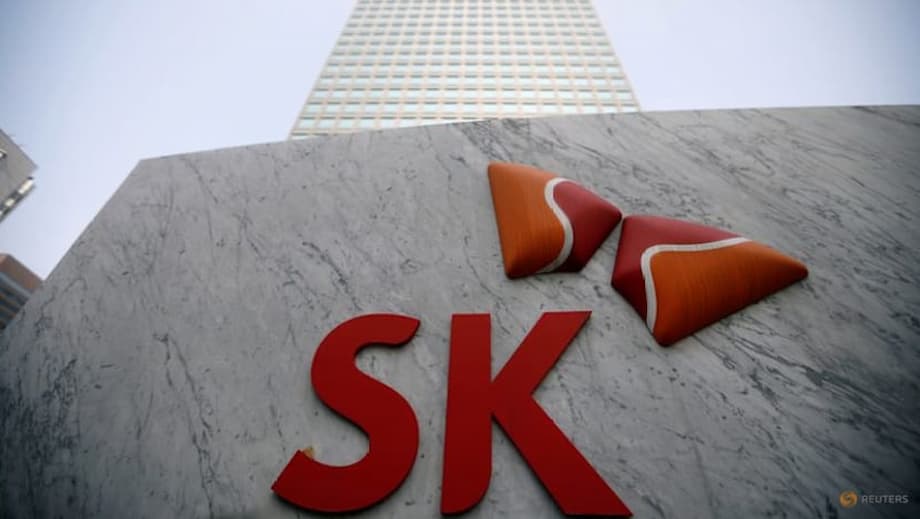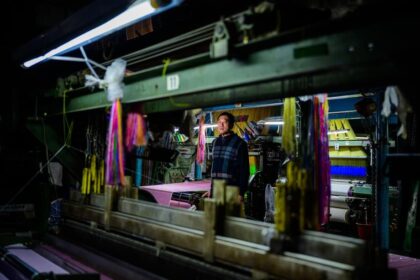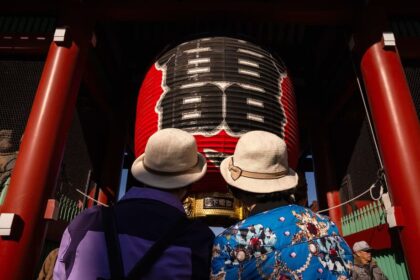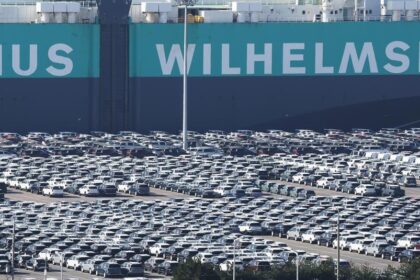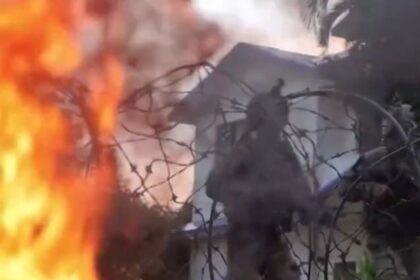Why this deal matters now
SK On has signed a supply agreement with Flatiron Energy Development that puts the South Korean battery maker squarely into the United States market for grid storage. The company will provide lithium iron phosphate batteries, known as LFP, for energy storage systems (ESS) with deliveries running from 2026 through 2030. Up to 7.2 gigawatt hours of capacity are covered under the deal, with SK On preparing to begin mass production of ESS focused LFP cells in the second half of 2026. Production will be supported by a conversion of some electric vehicle battery lines at SK Battery America in Commerce, Georgia, and the company also plans to set up LFP manufacturing in South Korea.
- Why this deal matters now
- What SK On will supply and when
- Why LFP chemistry fits grid storage
- Manufacturing plan in Georgia and Korea
- Why battery makers are leaning into storage
- Who Flatiron Energy is and where the projects fit
- What this means for the US storage supply chain
- Risks and what to watch
- At a Glance
The agreement marks SK On’s first major order for LFP batteries dedicated to energy storage, and it comes as several global cell producers adjust to a slower pace in electric vehicle sales. Battery makers are pushing into stationary storage to serve a growing pipeline of renewable energy projects, data centers, and grid modernization programs. Flatiron Energy, a US developer and operator of large battery projects, gains a partner with local production capacity and a technology roadmap that aligns with policy incentives and the rising demand for storage across the country.
What SK On will supply and when
The partnership begins with containerized battery energy storage units totaling 1 GWh for a project in Massachusetts, with shipments scheduled to start in the second half of 2026. Beyond that first delivery, SK On secured the right of first refusal for Flatiron projects amounting to 6.2 GWh across the United States through 2030, which brings the potential total to 7.2 GWh if exercised. The units use pouch cells assembled into high voltage modules inside containers, a space efficient design that allows developers to scale capacity by adding standardized blocks.
SK On did not disclose the contract value. Trade outlets in Korea and the United States have reported estimates around 1.4 to 1.5 billion dollars for the full program, reflecting the size and multi year nature of the supply. For a sense of scale, 7.2 GWh could equip roughly thirty to forty installations of 200 MWh each, a common project size for utility scale storage that provides two to four hours of discharge during evening peaks.
In a statement, the company said the move expands its product mix and helps balance exposure to the auto cycle. The company also set out plans to localize key inputs and broaden its LFP footprint beyond EVs.
SK On highlighted the strategic intent behind the shift. A company statement framed the deal as a way to build a durable line of business through grid storage while the EV market recalibrates.
The LFP battery production for energy storage systems expects to further strengthen our product lineup and business portfolio and to effectively respond to the temporary slowdown in electric vehicle demand, and accelerate stable growth.
The initial focus on New England reflects a region with high electricity prices, a growing share of wind and solar, and strong capacity market signals that reward storage for reliability during peak demand.
Why LFP chemistry fits grid storage
Lithium iron phosphate has become the favored chemistry for stationary storage because it is cost effective, robust under frequent cycling, and resistant to thermal runaway compared with nickel heavy chemistries such as NMC. Energy storage systems on the grid typically charge and discharge daily and do not face the tight weight and volume constraints of passenger cars. LFP’s lower energy density is less of a drawback in a container, and its strengths in safety and longevity are valuable for installations that must operate for years with minimal downtime.
LFP versus NMC in plain terms
NMC and related chemistries reach higher energy density, which helps a vehicle travel farther on a charge. That advantage matters less on a concrete pad next to a substation. LFP avoids nickel and cobalt, which helps reduce material cost and exposure to volatile mining supply. LFP cells generally handle more full charge cycles before their capacity fades to a set threshold, an important factor when project economics rely on frequent cycling to capture price spreads in wholesale markets.
Safety and diagnostics
Stationary storage projects must meet strict fire codes and utility standards. SK On says its storage units will use a modular architecture with heat propagation prevention features and diagnostics that include electrochemical impedance spectroscopy based health checks. These tools help detect cell degradation patterns early and can reduce the chance of isolated failures spreading through a module or rack. Container layouts also combine gas detection, ventilation, and fire suppression systems that are tested to standards accepted by insurers and local authorities.
Manufacturing plan in Georgia and Korea
The decision to repurpose part of the Commerce, Georgia facility gives SK On a US made supply option for ESS projects. A domestic production footprint can shorten shipping timelines, reduce currency risk, and help project owners qualify for higher tax credits where domestic content rules apply. The company plans to start mass production of ESS focused LFP cells in the second half of 2026, aligning with the first Massachusetts delivery window for Flatiron.
SK On has also pursued upstream localization. In July the company signed a memorandum of understanding with L&F that targets LFP cathode materials for North America. Over time, adding cathode and other component sourcing inside the region can further improve cost stability and make projects more resilient to trade policy shifts. The company operates two US battery plants today and has outlined plans to add more capacity with partners, which could offer incremental flexibility to allocate lines between EV and ESS as demand changes.
Production in South Korea remains part of SK On’s plan. Establishing LFP lines at home would give the company an additional base to support export markets, while the Georgia site serves customers that prefer or require US made cells inside their storage systems.
Why battery makers are leaning into storage
Global EV growth has cooled from the breakneck pace of recent years. Higher interest rates, the stepdown of certain incentives, and a more price sensitive mainstream buyer have all contributed to a slower sales mix in some markets. Large cell makers are spreading risk by building a second growth engine in stationary storage, where demand is being lifted by wind and solar additions, data center expansion, and the need for flexible capacity as coal and gas plants retire.
Policy and trade dynamics are reshaping the supply chain. US tariff increases on lithium ion batteries sourced from China, along with tax credit structures that reward domestic content, are encouraging developers to consider non Chinese cells and more local assembly. The storage investment tax credit can reach 30 percent or higher for projects that meet labor and domestic content milestones. A local supply base also helps utilities and investors manage compliance and procurement risks as rules continue to evolve.
Industry peers are moving the same way. LG Energy Solution cautioned in July that EV demand could remain soft into 2026 and said it would ramp ESS output while trimming or delaying some investments tied to autos, according to a company briefing reported by Reuters. Energy storage has emerged as a bright spot for balance sheets across the sector, with order books growing in North America and Europe.
Who Flatiron Energy is and where the projects fit
Flatiron Energy is a US developer that focuses on large battery installations from concept through operations. The company was founded in 2021 and has built an end to end capability that includes project design, equipment procurement, construction management, and long term asset operations. This vertical approach fits the new generation of storage developers that deliver full service projects to utilities, grid operators, and merchant markets.
The first delivery under the SK On partnership is a 1 GWh containerized system for a Massachusetts site. New England has pursued aggressive clean energy goals and faces tight winter peaks and transmission constraints. ISO New England has approved a 300 MW and 1,200 MWh indoor storage project in Boston that Flatiron is developing, and the region is seeing more battery projects designed to capture price spikes during cold snaps and to absorb midday solar surpluses.
Beyond New England, Flatiron’s pipeline includes projects in other US regions where solar and wind are growing and where capacity markets or utility programs compensate storage for fast response and reliability. The right of first refusal gives SK On a line of sight to additional demand as those projects reach notice to proceed, while giving Flatiron a clear manufacturing partner that can scale with its schedule.
What this means for the US storage supply chain
The US battery storage market has been dominated by a mix of imports and domestic integration. Cell supply has frequently come from Asia, with systems assembled by integrators inside the US. That picture is changing. Higher tariffs on Chinese battery products and new domestic content pathways for tax credits are making US and allied production more attractive. Developers are also seeking predictable logistics after a period of shipping bottlenecks and component shortages.
Adding SK On to the roster of cell suppliers with US production gives project owners a new option that aligns with policy and procurement priorities. A Georgia based cell source can reduce transit times and help satisfy supply chain disclosures increasingly required by lenders and utilities. The pivot to LFP also reduces exposure to nickel and cobalt markets, which can be cyclical and concentrated in a small number of countries.
Quality and safety remain central. Every large deployment is judged by performance data across thousands of cycles, and insurance markets scrutinize cell design, pack construction, and fault isolation. SK On’s emphasis on thermal containment and advanced diagnostics addresses key concerns for indoor and urban sites. If the company executes on the conversion of EV lines and maintains yield and consistency, it will be positioned to compete with established storage suppliers that have already delivered multi gigawatt hours in North America.
Risks and what to watch
Several variables could affect how quickly the partnership translates into installed capacity. Converting EV lines to deliver ESS cells at scale is a complex manufacturing task that requires retooling and new quality protocols. Any delays could push project timelines. Local permitting and interconnection remain persistent bottlenecks, especially in areas with congested transmission. Developers have learned to stage equipment deliveries to match construction and interconnection schedules, but coordination still requires careful planning.
Trade policy is another swing factor. Tariff rates, eligibility criteria for tax credits, and supply chain disclosure rules can change project economics. A broader field of US made and allied made cells will likely improve resilience, yet pricing pressure from low cost imports can still influence bids in competitive procurements. Finally, product differentiation will matter. Integrators and asset owners look for strong software, warranty coverage, and field support in addition to cell quality. SK On’s modular product strategy and diagnostics will be tested in day to day operations as the first units come online in Massachusetts and later sites.
At a Glance
- SK On signed a supply deal with Flatiron Energy to provide up to 7.2 GWh of LFP batteries for energy storage from 2026 to 2030.
- The partnership begins with 1 GWh of containerized storage for a Massachusetts project, with shipments expected in the second half of 2026.
- SK On will convert part of its Commerce, Georgia plant to produce ESS focused LFP cells and plans to add LFP production in South Korea.
- Media reports place the potential value near 1.4 to 1.5 billion dollars, though the companies did not disclose terms.
- The deal includes a right of first refusal for 6.2 GWh of Flatiron projects across the United States through 2030.
- LFP chemistry suits grid storage because of cost, safety, and durability advantages over nickel rich chemistries.
- Policy trends, including higher US tariffs on Chinese battery products and tax credits tied to domestic content, are helping shift supply chains.
- SK On plans safety features like heat propagation prevention and EIS based diagnostics in its containerized systems.


